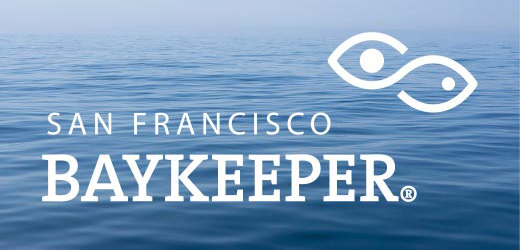Based largely on Baykeeper's advocacy, the Regional Water Quality Control Board today submitted a letter to the Port of San Francisco and the America's Cup Event Authority, indicating that storm water must in fact be managed consistent with the San Francisco Stormwater Ordinance and Clean Water Act.
Several large piers along the San Francisco shoreline, including piers 27, 30-32 and 19 are scheduled for redevelopment and major retrofits to accommodate racing teams and visitors to the upcoming America's Cup. Under a San Francisco ordinance, new and redevelopment projects greater than 5,000 sq. ft. are required to manage a large portion of the contaminated storm water running off that project site, which would otherwise be directly discharged into the Bay.
Under the 2010 Ordinance, storm water must preferably be managed by Low Impact Development techniques or other treatment systems that prevent runoff containing high concentrations of hydrocarbons, heavy metals and other contaminants. The Port believed that these pier retrofit projects constitute routine repair projects, thus exempting the America's Cup from compliance with the Stormwater Ordinance and the Guidelines written by SFPUC and the Port itself.
Following discussions and collaboration between Baykeeper, the Regional Board and the Port, regulators at the Regional Board insisted that the project is not in fact exempt from the requirements and engineers are now determining alternatives for Low Impact Development on the Piers or mitigation projects that would reduce storm water contamination from other nearby Port properties.
Such upgrades at Pier 30-32 would result in particular improvements, since this is a large parking area located directly over the Bay. Implementation of Low Impact Development and treatment technologies there will greatly reduce the amount of oil, metals and nutrients associated with runoff from parking areas.
Waters along the San Francisco shoreline feature the Bay's highest concentrations of poly-aromatic hydrocarbons (PAHs), a highly toxic pollutant which can likely be attributed primarily to storm water runoff from roads and parking lots. Widespread adoption of Low Impact Development along the shoreline represents a cost-effective strategy to reduce this impact, and redevelopment of piers in support of the America's Cup represents an excellent opportunity meet this goal.
Baykeeper will continue working with regulators and the Port to ensure pragmatic approaches to storm water management are achieved and that the America's Cup leaves the Bay and San Francisco's shoreline in better condition.
